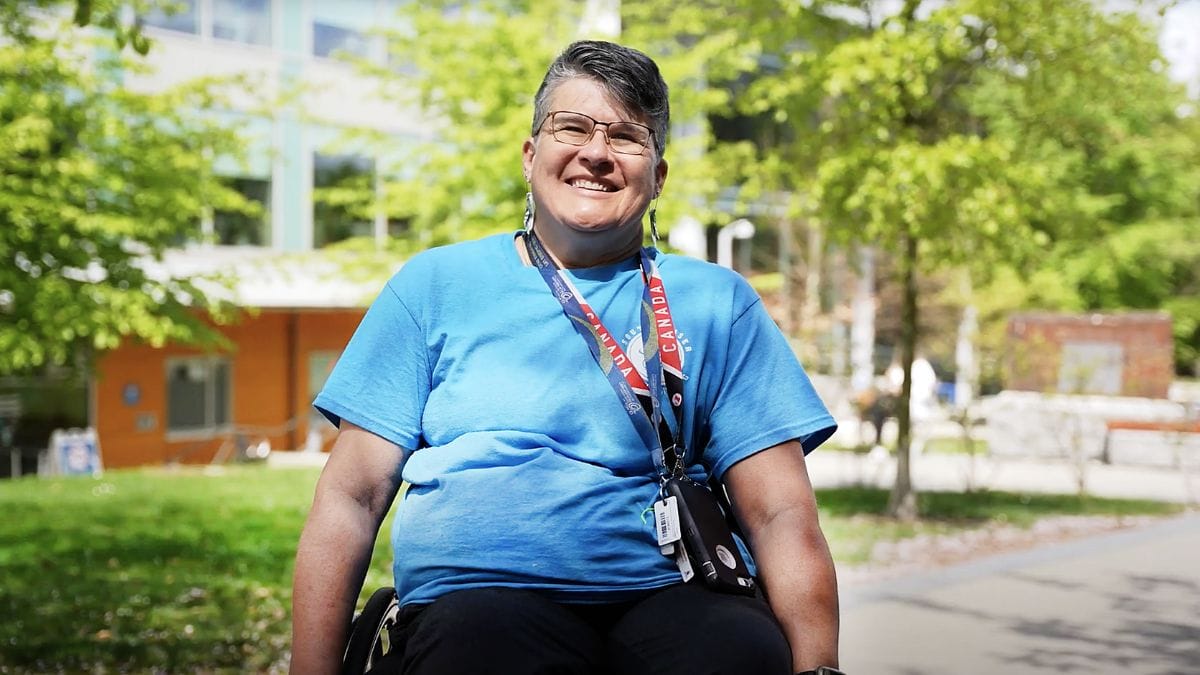
In 2019, the BC SCI Network hosted a series of accessibility legislation community consultations throughout the province to gather feedback on what would make BC accessible and inclusive for all. This feedback has been gathered in a report and shared with the Minister of Social Development and Poverty Reduction. Read on to learn more about our findings.
The BC SCI Network (comprised of Spinal Cord Injury BC, BC Wheelchair Sports Association, BC Wheelchair Basketball Society, The Disability Foundation and Neil Squire Society) hosted a total of five consulations across BC. Locations included, Vancouver, Nanaimo, Kelowna, Prince George and an online session.
The aim of these consultation sessions was to arrive at a consensus about the top three factors stopping BC from being a fully accessible and inclusive society and, through deeper discussion, provide suggestions for the change and legislation needed. Below is a summary of what we learned from our members and participants in these communities—thank you to everyone who joined us!
Summary of Consultation Reports
Although the BC SCI Network has a focus on serving people with physical disabilities, participants in our five consultation sessions represented a broad range of disability and community interests. In addition to participation by people with physical disabilities, participation also came from those who are deaf and hard of hearing, blind and low vision, and autism spectrum. Family members of those with lived disability experience, seniors and representatives of seniors’ groups, local government staff members, community service providers, local business owners and others contributed their views through the process. In total, 98 people participated in our consultations with ages ranging from 15–65+.
Through the range of input provided during our consultations, several common themes regarding barriers to participation, how to break them down, and how to legislate change emerged. We’ve summarized these ideas below, and the full report is also available.
Common Barriers of Participation & Possible Solutions
Built Environment
- There was a significant focus on accessible housing with strong and consistent calls for a provincial building code that includes enforceable standards for accessible, adaptable, and visitable housing. Participants also encouraged the provision of incentives for homeowners, landlords, and developers to increase the accessibility of existing housing. Protecting existing accessible housing stock for use by people with disabilities was also raised as a priority issue.
- Ensuring health services. This includes building access and wayfinding, accessibility of diagnostic and treatment-related equipment and infrastructure, and information resources
- Ensuring the accessibility of schools, including post-secondary institutions, was a priority for participants.
- Government services must be in buildings that are accessible.
- Incentives for making built environment accessible (e.g. tax breaks for businesses that renovate to make more accessible) should be provided to encourage businesses, service providers, etc., to improve access and inclusion, and to do so in a way that fosters positive attitudes toward change.
- While incentives were deemed important, it was clearly stated that penalties for noncompliance with accessibility standards and regulations must be imposed.
Service Delivery
- Much of the discussion about service delivery involved the need for increased knowledge and awareness about accessibility and people with disabilities. Education, training, and awareness building initiatives aimed at service providers (including all levels of government), businesses (including private and crown corporations), and the public.
- Government services must be fully accessible.
- Health services must be accessible with respect to being able to access and communicate with care providers and health care-related information.
- While incentives were deemed important, it was clearly stated that penalties for noncompliance with accessibility standards and regulations must be imposed.
- Services and supports are often vary between regions of the province and often not easily transferable. Services and supports for people with disabilities need to be standardized across the province.
- Increased coordination between different levels of government and within the provincial government will reduce barriers related to service navigation and delivery.
Transportation
- Accessible parking: Consistent standards that set a higher minimum number of adequately sized accessible parking spaces that are located in accessible locations in all municipalities was called for. Greater enforcement to ensure accessible parking is being used by people with disabilities is required to preventabuse of accessible parking spaces by those who are not permitted to park in them.
- Sidewalks and streets: Lack of snow removal from sidewalks and streets, and lack of curb cuts are barriers to participation. Greater enforcement of snow clearing bylaws and installing curb cuts will remove these barriers to community participation.
- Taxi Service: Several issues and concerns were raised regarding taxi services and ride hailing businesses. The incidence of taxi drivers not picking up people with disabilities is far, far too prevalent. The number of accessible taxis may be an issue, but providing incentives for taxi drivers to take customers with disabilities can help ensure services is provided to those customers. More disability focused training and awareness for taxi drivers was called for.
- Ride Hailing: Concerns were raised over the lack of requirement for ride hailing services to provide accessible vehicles, meaning people with disabilities will be denied the option to utilize ride hailing services, which many would like to take advantage of. This lack of choice is seen as discriminatory. Drivers of ride hailing services should receive disability-focused training and be incentivized to provide service for people with disabilities.
- Public Transit: Generally, participants recognized the progress made regarding the accessibility of public transit in many locations. However, provincial standards should be set so that all buses and bus stops (a municipal matter) are accessible. In addition, enhanced disability-focused training and awareness for transit operators, managers, and executives will promote more inclusive experiences.
- HandiDart: More flexibility and increased level of service is required to meet the diverse needs of people with disabilities who rely on the service.
- Inter-city/Long Distance Bus Service: Buses must be accessible and incentives must be put in place to ensure accessible bus services exist in all regions of the province. This will ensure people with disabilities and others who do not have access to their own vehicles can move freely within province. This will also help increase tourism in many regions of the province.
- While incentives were deemed important, it was clearly stated that penalties for noncompliance with accessibility standards and regulations must be imposed.
Information and Communications
- This topic was of particular interest to participants who are blind or low vision and/or deaf or hard of hearing, but was also discussed at various levels by all participants.
- Interestingly, much of the discussion on this topic was focused on the need for education and awareness about disability, accessibility, and inclusion. Training and awareness programs were seen as essential for overcoming attitudinal and behavioural barriers to access and inclusion. These programs are needed for employers, service providers, businesses, and society as a whole.
- Finding and accessing information is a widespread barrier to participation by people with disabilities. Information on government and private sector services (including info about the accessibility of the services or businesses) needs to be easy to find and be provided in accessible formats.
Employment
- There was broad consensus that employment could only be considered once the other factors were resolved. There was much discussion about the need for better supports for daily living, including support that is sufficient in scope and need, predictable, portable (across health authorities). Without an accessible home, accessible transportation, and sufficient supports for daily living, employment is simply not a realistic option for most people with disabilities, much as they might wish to work.
Summary of Input on How to Legislate Changes
- Many participants supported the adoption of provincial structures equivalent to those created through the Accessible Canada Act model (e.g. the Canadian Accessibility Standards Development Organization and an Accessibility Commissioner who will be responsible for compliance and enforcement activities under the legislation).
- People with disabilities must be involved in the development, monitoring, and enforcement of standards and regulations.
- Incentives for making built environments and services accessible will help accelerate change in a positive way (eg, tax-related incentives for businesses that renovate to make more accessible). • Penalties for non-compliance must be clear, substantive, and imposed when necessary.
- Government must make investments in programs and initiatives that support positive attitudinal and behavioural shifts towards people with disabilities and ensuring our communities are accessible and inclusive of all.
- Whereas participants wanted to see changes happen now (many are tired and frustrated in waiting for change), there was a recognition by many that it was important to ensure the standards, regulations, and associated programs were developed with fulsome input and consideration of the diverse needs of all involved and impacted.
You can read the full BC SCI Network Consultation report here.
To learn more about the Accessible Canada Act visit the Government of Canada website or include-me.ca.




